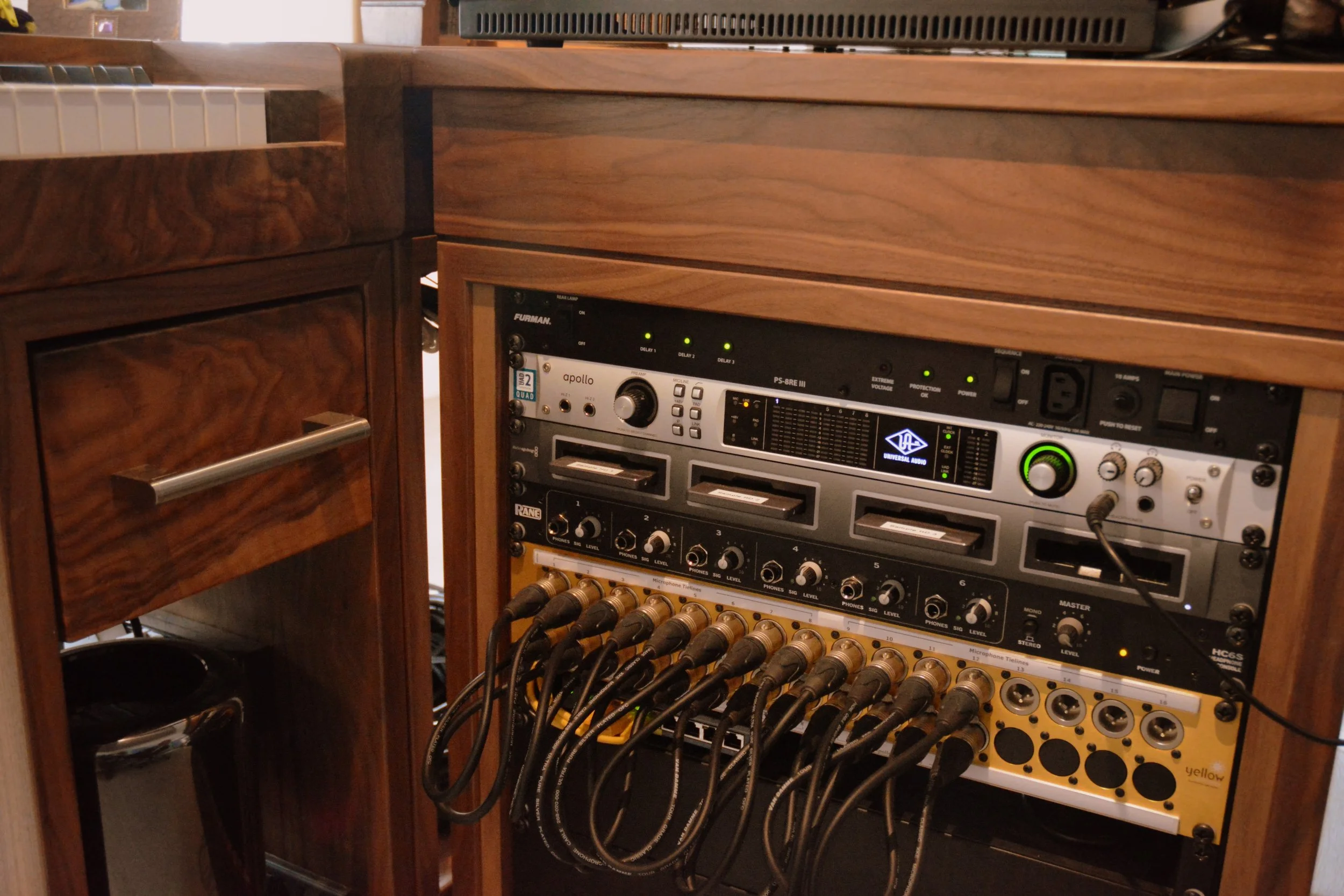It’s one of those things that initially seems like such a luxury - a purpose-built workstation desk; and it’s normally the first thing to go when the budget is squeezed. But why? This is where you’re going to work for hours and hours every day for a large part of your life! All that expensive equipment you have is going to be used on this desk. So why would you make do with something that is going to make your life more difficult and, in many cases we’ve seen, even painful?
When we first started designing furniture, at the turn of the millennium, we did so not because it was lucrative for the company - far from it! We did it because we realised what a key component this was to our clients, and because there was so little available on the market to address the needs of professionals. Don’t get me wrong - both now and then there was no shortage of studio furniture on the market. But it is invariably built to a price rather than to function as best it possibly can.
Let’s look at the key considerations then:-
Keyboard Integration
This has to be the first consideration because it has a big impact on the choice of furniture and on the ergonomics of the system. The majority of the workstations we build have built-in keyboards of some description and we have different ways of doing this. The most popular is the pull-out keyboard drawer.
There are many different keyboard drawers on the market and most of them share the same issues:-
Too loose or too stiff when pulling in and out;
Not rigid enough when playing;
Proclivity to “crab” - where the drawer jams on alternating sides while pushing in.
Keys too high or legroom insufficient or both!
Let’s be clear now - we didn’t have the answer from the word go and our current drawer is the result of twenty years of development.
Moving on to the built-in keyboard.
This style is often favoured by composers who spend most of their time at the keyboard and, hence, it’s never “in the way”. Again, it makes use of the Doepfer LMK4+ keyboard, which allows near-perfect desk and key height without sacrificing legroom.
And finally, there’s a hybrid option, with the fixed keyboard, but with sliding cover sections to allow you to shut away all or sections of the keyboard when you don’t need them.
equipment accommodation
Of course, if this is going to work, you need to be able to appropriately accommodate all of your equipment, not just now but for years to come. It’s hard to predict what you’re going to need to allow for in the future, so it pays to allow for expansion. It was a proud moment when a desk that we built fifteen years ago for a Power Mac G5 managed to accommodate the 2019 Mac Pro, having been through several generations in between!
Rack Space
It can be difficult to decide on rack space. These days we use a lot less rack-mountable equipment than we used to and it’s often the case that a full-size rack can look a bit empty. The key is to make sure you have what you need close to hand and to have space that can be re-purposed if your rack requirements become minimal.
Lots of desks have rack space beneath the desktop. This is a good place for equipment that you use infrequently or where you don’t need to make fine adjustments, but less so for your go-to vocal compressor.
Where you need regular access or a good line-of-sight, a desktop rack can be useful. At this point, you have to be careful with your loudspeakers (see below), as it’s easy to cause issues as you build up equipment in front of them. A low, raked rack can present a good solution.
And if you’re really not sure what to do, a good solution is to have a rack-width compartment with drawers, shelves or doors, so that you can convert it to a rack unit in the future, should you need to.
Cable Management
Once you’ve got your beautiful new desk, you don’t want the vision to be spoiled by cables trailing everywhere, so it’s important to have some cable management built in.
In our experience, both users and manufacturers vastly underestimate the amount of space required for cable management, so our tip is to allow for way more than you think. Nobody has ever complained that they have too much space for cables! We’ve found that the best options are open channels. Lids or doors can be good if, for example, you need to get access to cables from the front of the desk and you don’t want to see them all, but generally speaking the simpler the better.














